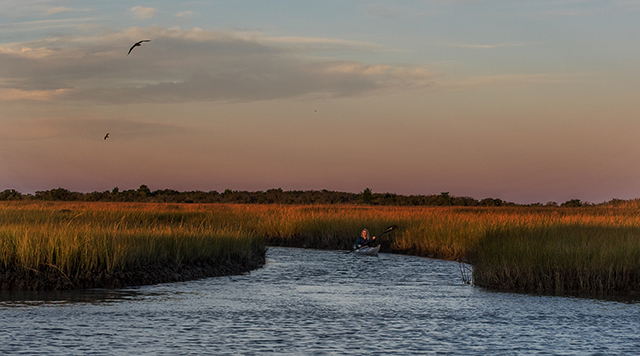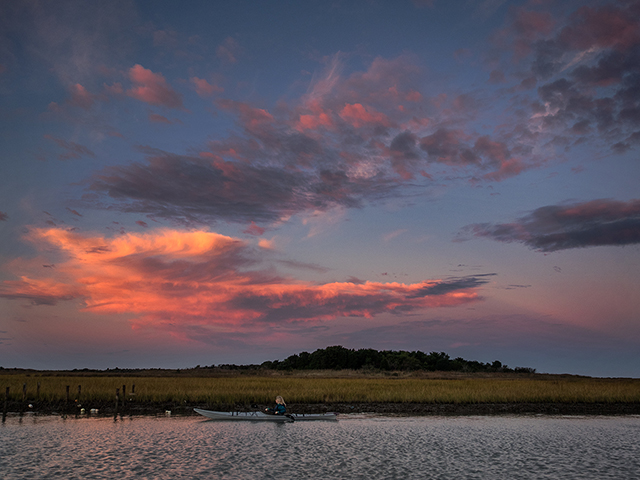Smith Island Workshop
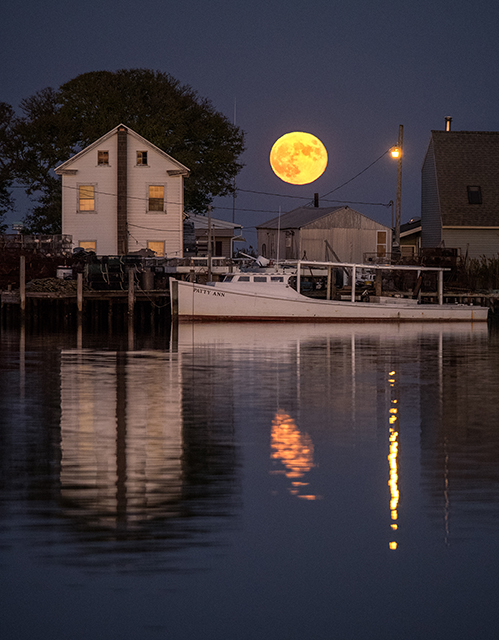
View of “Hunter’s Moon” rising above Tylerton on Smith Island Olympus E-M1 40-150mm f2.8 1/60th @ f2.8 1600ISO
Early October on Smith Island: Dave Harp (FirstLight instructor, wonderful photographer, and great friend) has told me several times that this is his favorite time of year on the island. We’d held two workshops on Smith in 2009 (be sure and look at the multimedia pieces on this website) during which Becky and I fell in love with the place. So, the decision to do another workshop on the island was an easy choice.
With a total of 8 students, this was a small and intimate workshop. Early morning photo opps, followed by an edit session, then back out in late-day light, and we were never disappointed. One great event after the other, culminating in a final evening moon-rise that was nothing short of spectacular.
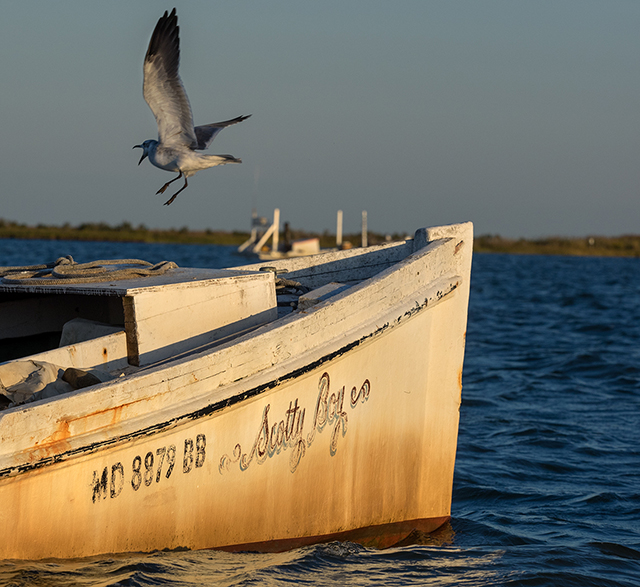
Hull of “Scotty Boy” oyster scraping off of Smith Island Olympus E-M1 40-150mm f2.8
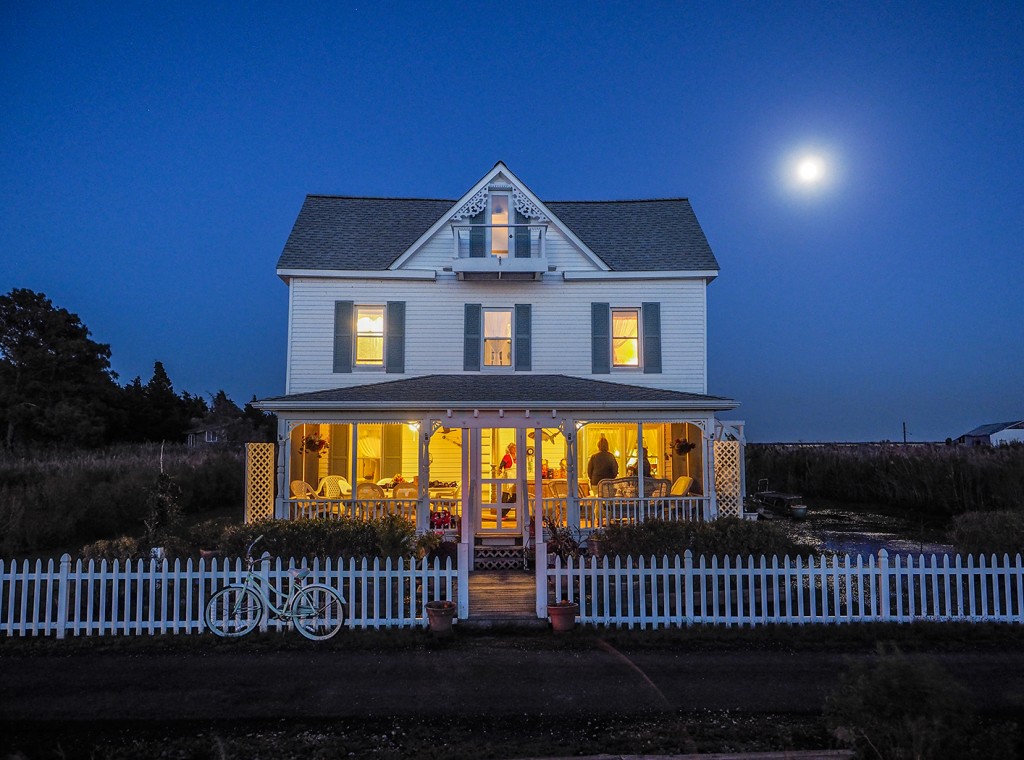
Inn of Silent Music Olympus E-M1 12-40mm f2.8
I’m a huge fan of the Olympus mirrorless camera system, having written (and spoken) about it in talks, and previous blogs on this site. Luckily, Olympus sent me the new 40-150mm f2.8 (this is equivalent to an 80-300mm in 35mm think) right before we departed. About the size of an 80’s version Nikon 180mm f2.8, this lens is the one I was waiting to get my hands on in a real-world setting.
I’ve been using the Olympus 50-200 since its introduction, finding this lens as a perfect addition to my bag. It provides a great range for most general assignment work, as well as giving me that range for wildlife photography in a portable and fast package. I’ve been watching anxiously for some months as Olympus worked on the replacement for this critical lens and I’ve not been disappointed.
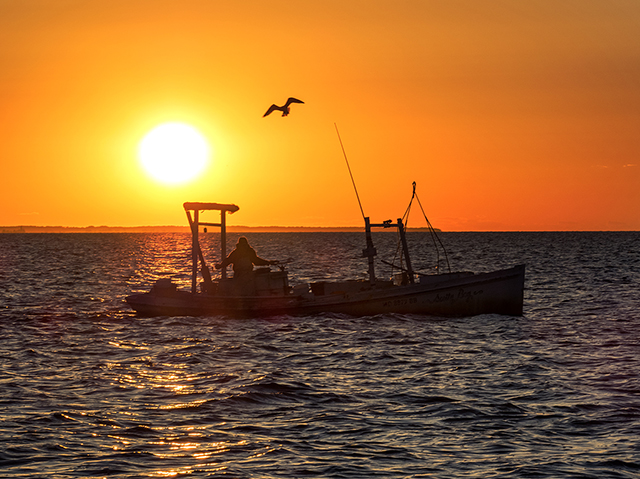
First morning of workshop Olympus E-M1 40-150mm f2.8
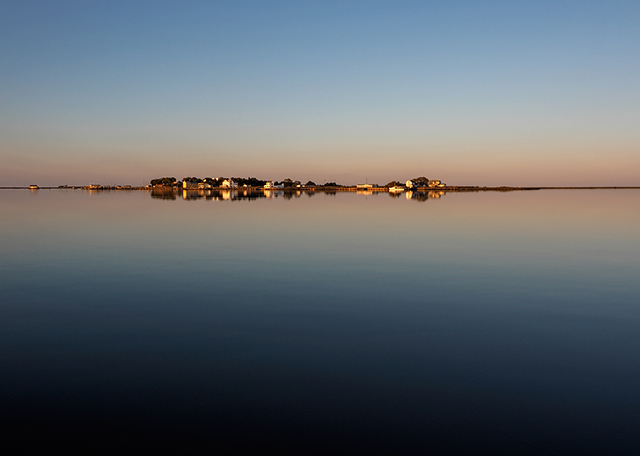
Tylerton, Smith Island, as viewed from a very still sound Olympus E-M1 12-40mm f2.8
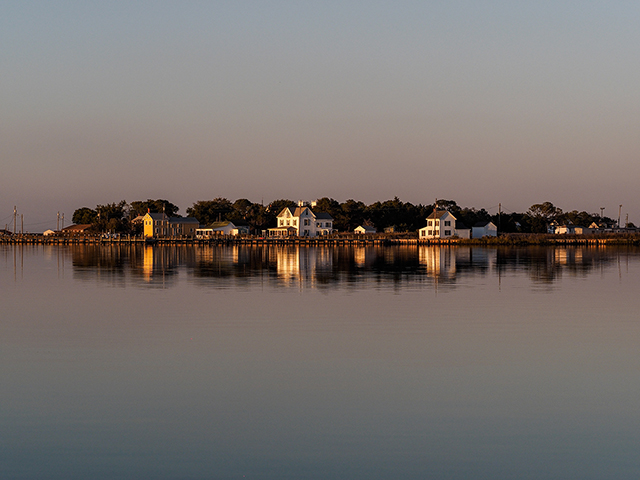
Approaching Tylerton from sound Olympus E-M1 40-150mm f2.8
A really smooth zoom ring melds very well with the professional build and ergonomics of this lens. Wide open, the sharpness is incredible, with a depth of field that requires the photographer to be very cognizant of focus…a slight amount out, and the image is soft. But, when focus is obtained, the sharpness is astounding. This shallow depth of field, when shot wide-open, also provides the photographer a beautiful bokeh. Stopped down one or two stops provides a noticeable increase in depth of field.
Handling and ergonomics on this lens are absolutely first-rate, as it fits perfectly in my hands inspiring confidence while shooting. Plus, they created a way-cool lens hood, that with a slight turn of the base, allows the hood to collapse along the barrel-and it will hold the weight of the lens and camera (I usually have this mounted on my E-M1 with the HLD-7 battery/vertical grip.) In my roll-aboard bag, this lens does occupy less space than my 50-200, which is huge to me, as I constantly try to reduce the footprint of my equipment. Less is more.
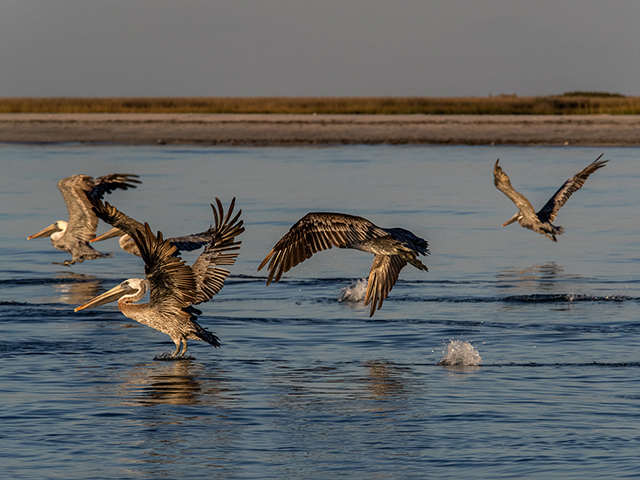
Nesting colony of Brown pelicans Olympus E-M1 40-150mm f2.8
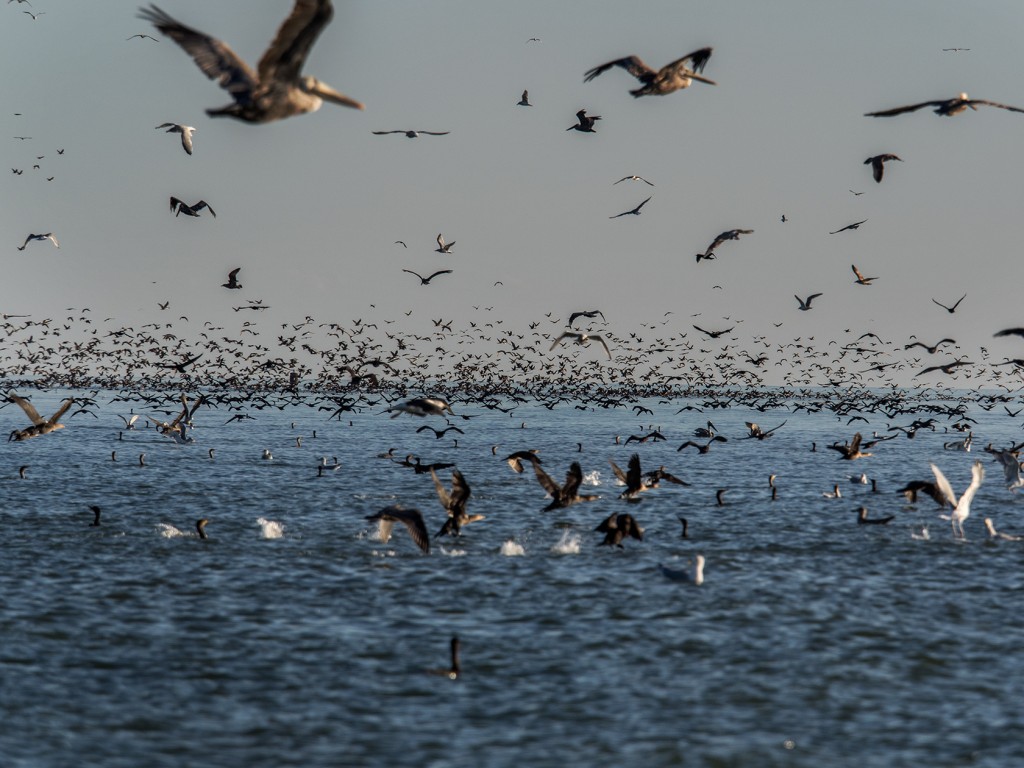
Near Shanks’ Point in the Chesapeake Olympus E-M1 40-150mm f2.8 w/1.4 converter
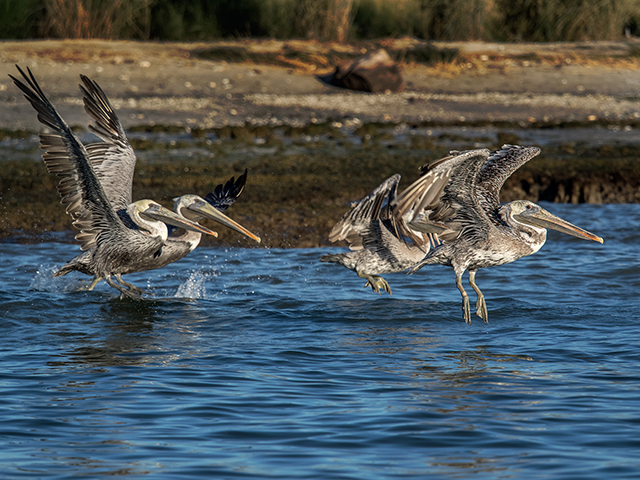
Brown pelicans taking off from Shanks’ Point Olympus E-M1 40-150mm f2.8 w/1.4 converter
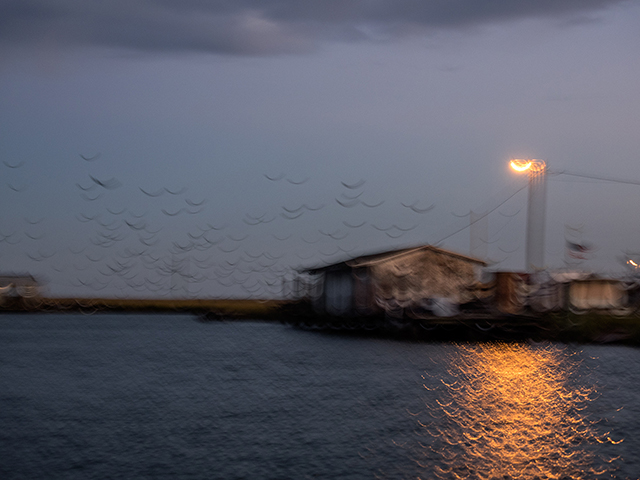
Rhodes Point on Smith Island Olympus E-M1 40-150mm f2.8
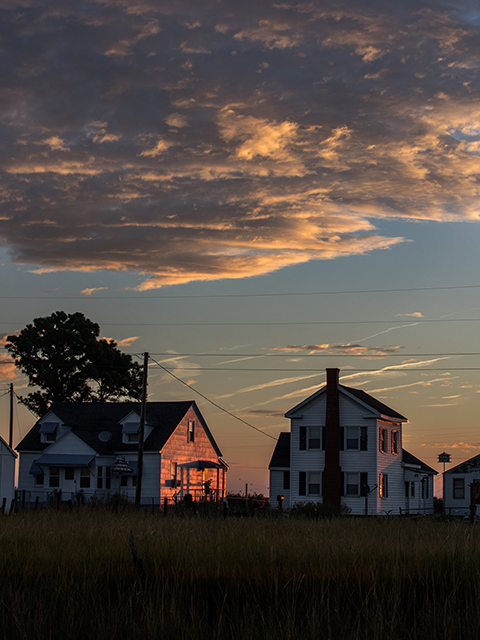
Early morning on Rhodes Point, Smith Island Olympus E-M1 40-150mm f2.8
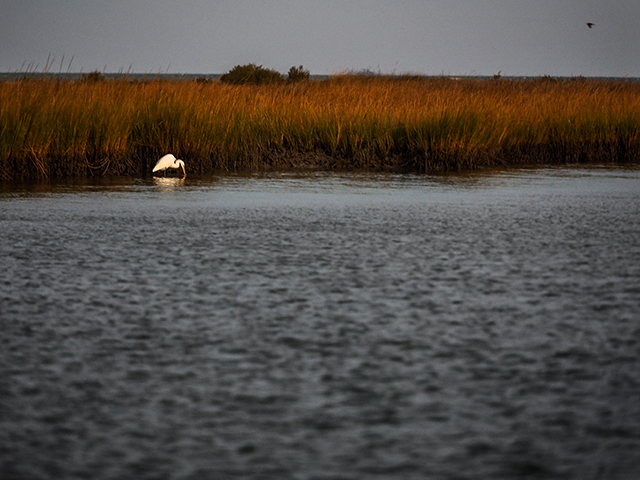
Egret feeding in marshes near Rhodes Point Olympus E-M1 40-150mm f2.8
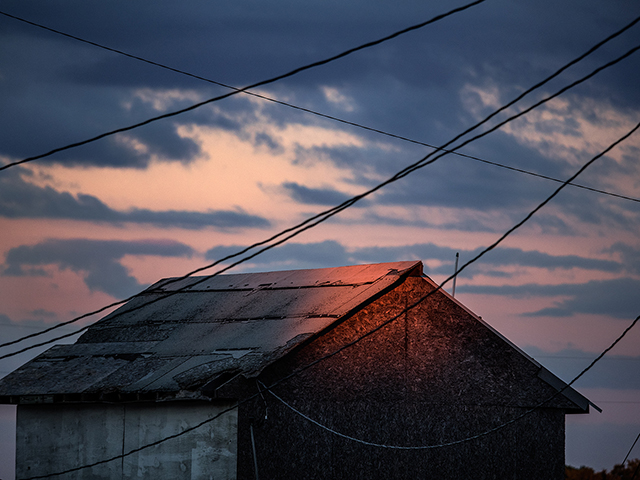
Tylerton, late afternoon Olympus E-M1 40-150mm f2.8
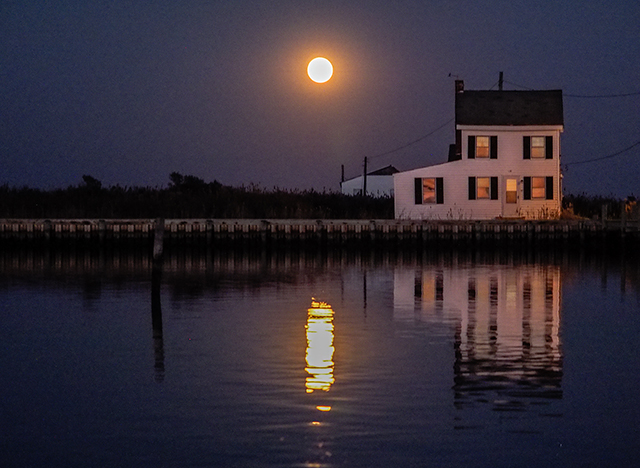
Hunter’s Moon rising over Tylerton Olympus E-M1 40-150mm f2.8
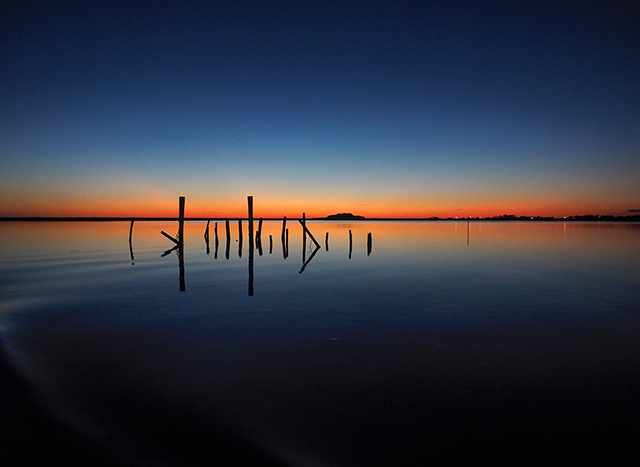
End of final day of workshop, approaching Tylerton Olympus E-M1 12-40mm f2.8
The weather resistance of this lens seems like it should be along the lines of the 12-40mm Olympus Pro lens, which has been through very abysmal conditions, and hasn’t failed me. More on that after a couple of upcoming trips, during which this should be tested.
Bottom line, and at the top of my requirements for gear, my equipment has to produce incredible image quality, and the EM-1 has done that. I really think that the mirrorless revolution is critical for the success of photography, as the new generation of image-makers (meaning, just about everyone, as we are the most prolific society ever in terms of photographing our lives) have forsaken the large DSLRs for smaller equipment, one reason the cell phone cameras are so popular. What is the best camera to have? The one that’s in your hands when you need it, and my lightweight and portable Olympus cameras are with me when I need them.



